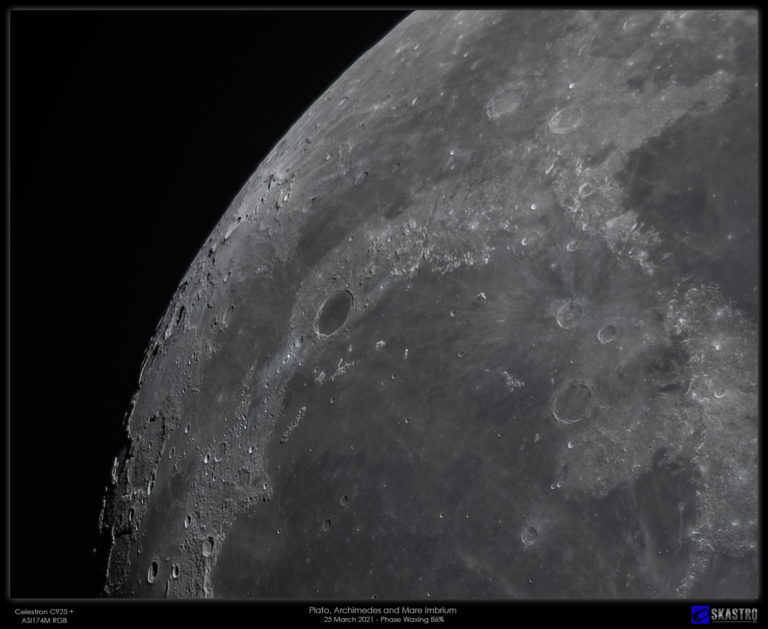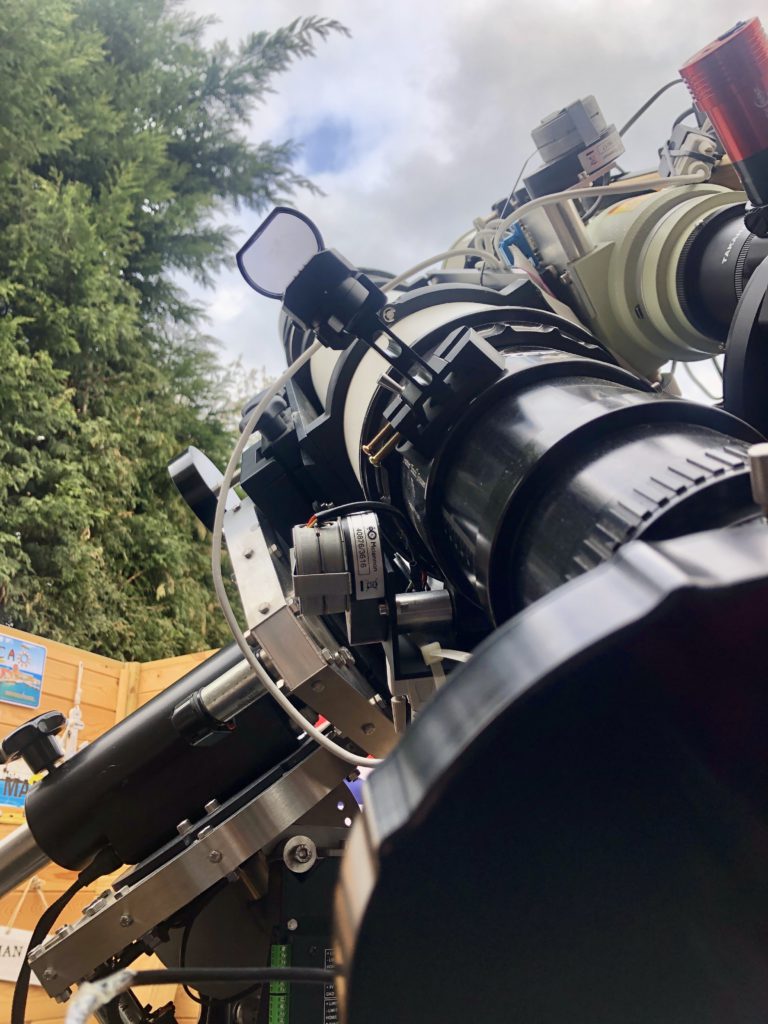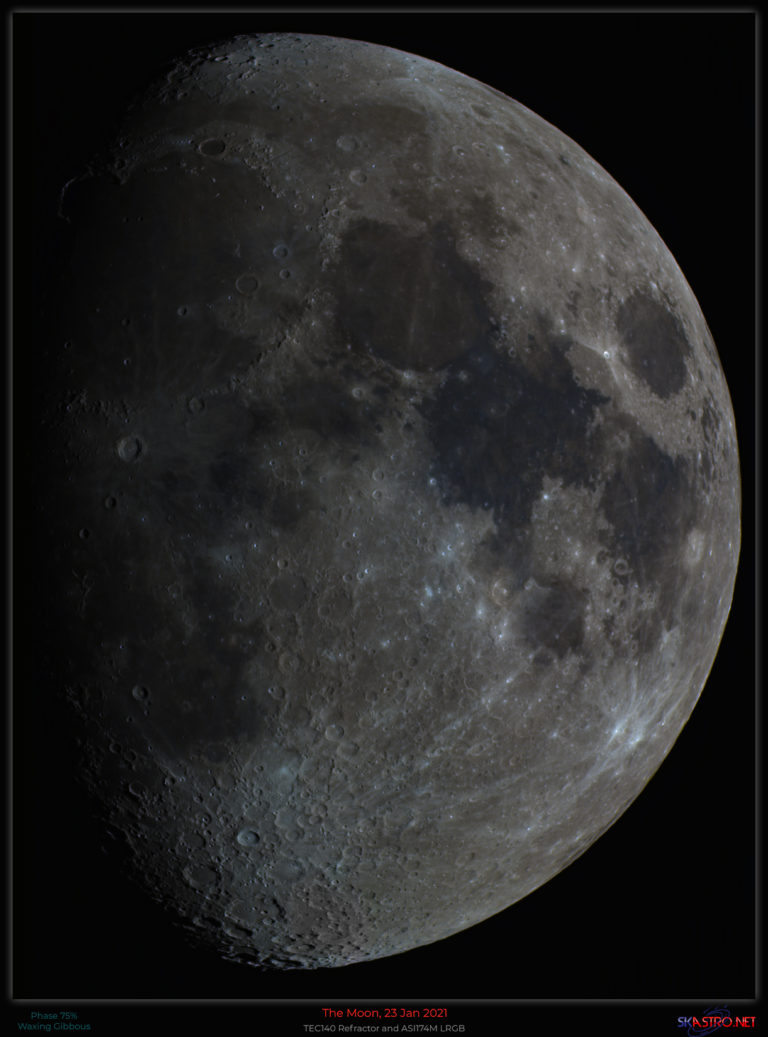Images on this post were made by using the TEC140 and Celestron C925 SCT telescopes with my ASI174M mono camera. From my backyard in Nottingham on the evening of 25th March 2021 with the Moon high to the south in Leo at a phase of 86% waxing (i.e. growing towards full moon) and at an altitude of about 50 degrees above the horizon. A slightly hazy sky made for quite good seeing although it was very cold and windy and the moon was jiggling about a lot in the gusts, even inside my sheltered observatory. I had to try and time my capture runs between these gusts and passing clouds, a process that was not always successful. As a consequence I accumulated nearly 600G data for these four pictures in total, much of which had to be deleted. I was outside at the scope for about 90 minutes doing these…
A selection of four images I took with my two main telescopes on the evening of the 24th March 2021…
One of the most important and overlooked matters to consider to prevent untold frustration in observational and imaging astronomy is being able to easily, quickly and reliably find the object you want to observe or image. The smaller the field of view of the telescope/camera/eyepiece combination, the more difficult and important this becomes. When you factor in the fact that the subject may not yet be in proper focus it is clear that just pointing the telescope in the direction of the moon, planet or object and hoping that it will be in the field of view (FoV) is a forlorn hope and leads to great frustration whilst you are hunting around trying to get the object both in focus and in the FoV. I’m a mild natured person and even I have been found cursing at the EP on many occasion trying to do this! Red Dot Finder…
I have owned my Celestron C925 SCT telescope for many years but have only ever used it for visual purposes. …
After months and months of cloud, The Moon shone down on us in Nottinghamshire on the 23rd January from high up in the sky in Gemini (my daughter’s birthday!) It was at a phase of 74% waxing gibbous. I used my TEC140 scope, ASI174M camera and Baader RGB filters. The full disk image was with the telescope at its native focal length and with the two closer up views at the bottom I used a 2″ Televue Powermate x2 in front of the filter wheel/camera assembly. RGB Disk at 75% Waxing Gibbous Above is best 25% of 20000 frames in each of RGB. Copernicus and The Apennines After the full disk image I inserted the Televue 2″ x2 Powermate to get a more zoomed in view. Above is the Apennine Mountains and Copernicus crater to the left of centre. Best 15% of 5000 frames in LRGB. Clavius and Tycho Craters…



